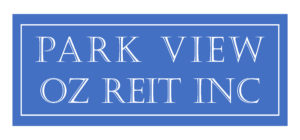Qualified Opportunity Funds (QOFs) are best known as a U.S. tax incentive, but their reach extends beyond U.S. domiciled investors. U.S. taxpayers based internationally, including U.S. expats and green card holders, can benefit as well. The key lies in understanding where QOF incentives align smoothly with foreign tax regimes, and where they create mismatches.
The Basics: Benefits of QOFs
In July 2025, legislation was passed that enhanced opportunity zone tax incentives and made them a permanent part of the U.S. tax code. The two most significant QOF tax incentives under the new legislation were the following:
- 5-year deferral of taxable capital gains and a 10% elimination of the gain: The deferral benefit lasts for five years from the date of the QOF purchase or the sale of the QOF, whichever comes first. To benefit from the 10% elimination benefit, the taxpayer must hold the QOF for a minimum of 5 years.
The deferral benefit can be thought of as a 5-year interest-free loan on your tax liability with 10% principal forgiveness.
- 100% elimination of taxable capital gain income: After a 10-year hold, the taxpayer can elect to step up their cost basis in their QOF investment to the current market value when they exit the fund. This eliminates all taxable capital gain income, so it eliminates not only capital gains tax but net investment income tax (NIIT) or any future tax targeting this income; any amount multiplied by zero is zero. This benefit lasts for 30 years from the date of the QOF purchase.
The elimination benefit can function like a Roth IRA, enabling a greater portion of the taxpayer’s savings to achieve tax-free status.
The current OZ program only offers a deferral until December 31, 2026. The enhanced benefits described above are applicable to QOF investments made after January 1, 2027. Learn how to potentially keep current capital gains eligible for these enhanced benefits in our blog post Mind the Gap.
Ideal Scenarios: Where QOFs Shine for International Taxpayers
1. U.S. Expats in No-Capital-Gains Jurisdictions
If an American is living in the United Arab Emirates, Singapore, Hong Kong, Monaco, or Switzerland (as a private investor), the QOF rules apply with no foreign friction.
- Why it works: These jurisdictions don’t tax foreign-source capital gains. The U.S. rules drive the entire tax outcome, meaning both deferral and the 30-year exclusion apply cleanly.
- Result: Expats in these regions get the full QOF benefit, enabling them to defer tax today and eliminate U.S. tax tomorrow.
2. Green Card Holders Abroad
Permanent U.S. residents are taxed like U.S. citizens, even overseas. In their case, QOFs are fully available.
Where QOFs Do Not Work as Well
1. High-Tax Credit Countries (UK, Canada, Australia, EU Member States)
- Problem: These countries tax gains in the year of sale, regardless of U.S. deferral.
- Result: The foreign tax is due now, but U.S. tax is deferred; as a result, the foreign tax credits don’t line up. This creates a timing mismatch and the risk of double taxation.
2. Non-U.S. Gains
QOFs only apply to U.S.-taxable gains. If a non-U.S. citizen sells stock in Paris or Bitcoin in Singapore, there is no U.S. tax and no QOF eligibility.
3. Complex Treaty Jurisdictions
In some countries, tax treaties limit the ability to claim foreign tax credits or may not recognize U.S. deferral. QOF benefits there are uncertain and may require careful cross-border structuring.
Key Takeaways
- Best fits: U.S. expats and green card holders in no-capital-gains jurisdictions.
- Weak fits: U.S. expats in jurisdictions with capital gains tax (UK, Canada, Australia, France, Germany). Here, the potential for 30 years of tax-free growth is still powerful, but the deferral benefit can backfire.
- Not eligible: Any capital gain that does not create a U.S. tax liability cannot be sheltered in a QOF.
Final Word
For U.S. taxpayers residing abroad, Qualified Opportunity Funds can be an effective tool for deferring and eliminating U.S. tax liabilities. Nevertheless, the ultimate tax outcome is determined by how U.S. rules align with the tax laws of your country of residence.
Park View OZ REIT: The Streamlined Approach to QOF Investing
Unique Public Access: Park View OZ REIT is the only Qualified Opportunity Fund with publicly traded shares (trading symbol: PVOZ).
Flexible Entry Options: Begin with as little as one share on the open market or $10,000 through our subscription agreement.
Investment Timeline Freedom: Exit at your discretion without penalty. With no planned 10-year liquidation, maximize potential tax-free growth for 30 years.
Simplified Tax Reporting: Avoid the complexity and delays of partnership K-1 tax forms.
Open to All Investors: No accreditation requirements to participate.
Convenient Purchasing Methods: Buy shares through your existing brokerage account or directly via our website’s electronic subscription agreement.
Are you ready to see how QOFs can benefit you?
Materials provided by Park View OZ REIT or our affiliates have been prepared for informational purposes only and are not intended to provide or be relied on for tax, legal, or financial advice. You should consult your own tax and legal advisors before engaging in any transaction.
